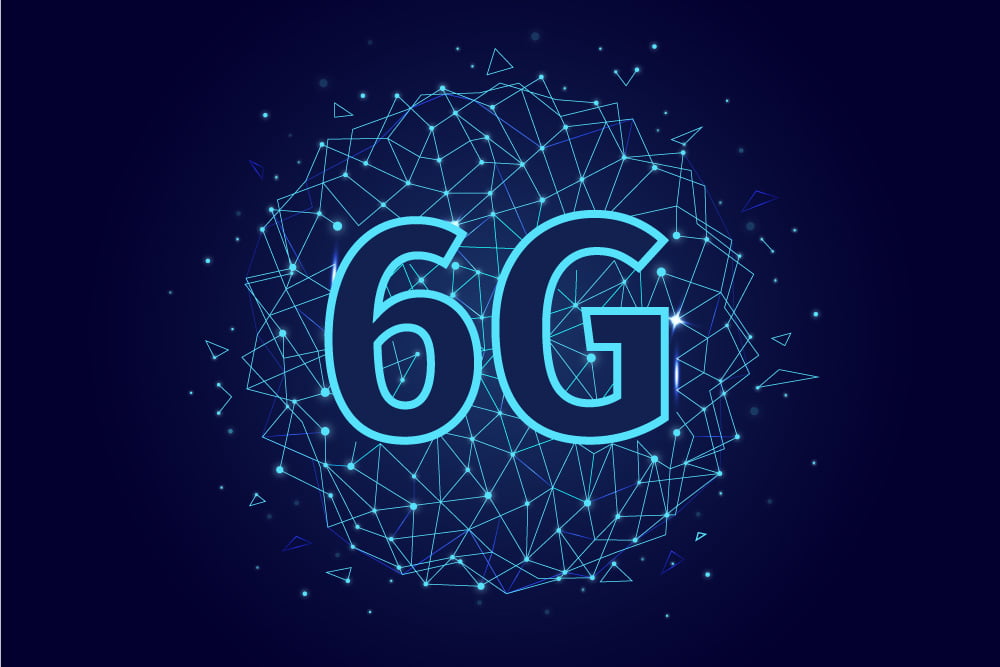Sixth-generation technology or 6G is the latest generation of wireless communication standards. 6G is the successor to 5G, and it’s coming soon. It will offer faster speeds, including up to 1TB of data speeds. This means a user in a 6G-enabled city will be able to download a high-quality movie in less than one second. With this speed and the expected increase of use with IoT devices, 6G is predicted to have an even more significant impact on our lives than 5G.
6G wireless will offer much more than just faster speeds. It will offer a wide array of services and benefits like the ability to connect billions of different devices to the internet which brings us one step closer to the Internet of Things becoming a reality. There are also plans to give users multi-gigabit connectivity, a guarantee for privacy, and ultra-low latency. Many expect it to bring serious job creation with it as well.
In the future, 6G could be used to deliver some fancy new applications that you can hardly imagine. For example, your autonomous car will probably be equipped with 6G connectivity to communicate with other cars, helping to prevent accidents. Or if you want immersive virtual reality experiences, 6G bandwidth will let you enjoy them in a shared space with other people. You’ll be teleporting in virtual spaces without any lag or instability. It’s such a thrill!
In no uncertain terms: 5G is happening, and so parallel research on 6G has begun. We don’t know if it will be called “6G” or anything else, but the common understanding of 6G is that it comes after 5G. What do we know about 6G? Very little at this stage. When will we see 6G phones? A long time from now. Some of the early research projects have been funded across Europe, Russia, and South Korea. However, most of the initial funding came from Japan, which is expected to be the first country to deploy 6G services in 2030.
6G is expected to surpass 5G in just about every aspect. 6G networks will be faster, will have lower latency, and will come with greater bandwidth. Scientists believe that the technology behind 6G can make instant connections possible between devices while eliminating wired networks. The result would be a decentralized network where no single network operator has control of the flow of information. 6G will enable autonomous cars, drones, and smart cities to work better.
 Many countries’ governments already had taken steps for the revolution of 6G investments, including:
Many countries’ governments already had taken steps for the revolution of 6G investments, including:
• Japan, which has a goal of deploying 6G by 2030 in part to benefit its 2020 Olympics. Its Ministry of Internal Affairs and Communications and the National Institute of Information and Communications Technology (NICT) are both major backers
• China, which has made aggressive moves towards 6G deployment as part of its battle for technological leadership with the United States. The Chinese Ministry of Science and Technology estimates that commercial 6G will be in use by 2028, a decade before the U.S. government’s top scientists predict it will become widely available
• Finland, whose Prime Minister promised to make Finland a leader in 5G technology when he spoke at Mobile World Congress in 2019. Since then, he has announced plans to invest 1 billion euros in future mobile telecom research and development, highlighting Finland’s ambition to leapfrog other nations on 6G as well
• Europe, the University of Oulu in Finland has a 6G flagship project that will bring together 6G research from many countries.
• Germany, Vodafone’s 6G research facility in Dresden will be responsible for testing the equipment for 5G and 6G communications as it is developed
• South Korea, Samsung, the South Korean technology giant is working to develop the sixth generation of mobile technology, or 6G, by securing the key technologies that will allow a large number of devices for simultaneous connection.
• The United States, 6G research is proceeding in many regions around the world. The US government, along with some of its mobile carriers and tech companies, has begun several 6G initiatives. Most of these are governmental efforts to fund 5G research as part of a national strategy. Around 18% of the country’s total number of patents are 6G-related, and the US appears to be making a concerted effort to keep pace with South Korea, Japan, China, and multiple European countries.
You’ve probably seen the commercials for 5G wireless service. And if the experts’ predictions are correct, 6G will become available by 2030. So, while these latest technologies become available, let’s take a look at how to get the most out of your 4G and 5G services.
